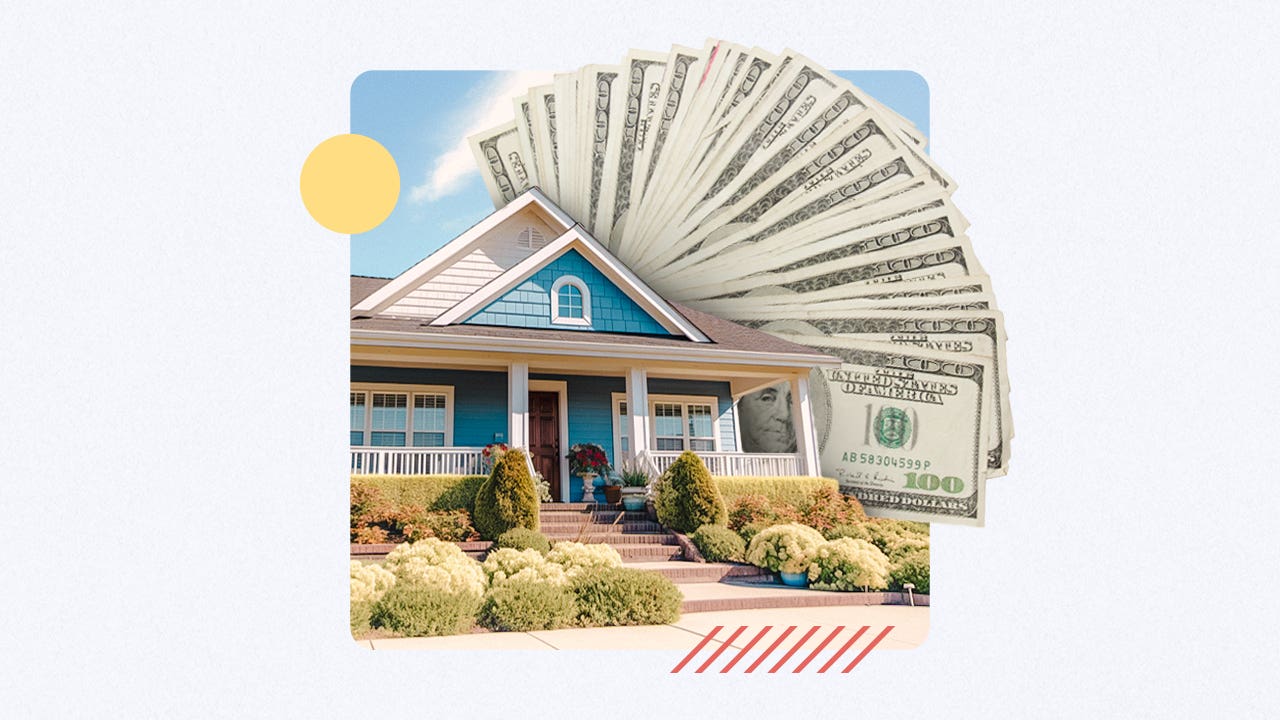What income do I need to afford a $450K house?

If you’re aiming to buy a $450,000 home, you’re looking in the upper half of the housing stock in the U.S. The median sale price in the country as of September was $394,300, according to the National Association of Realtors. However, getting a mortgage lender to approve you for that $450K purchase relies on a range of inputs, starting with your annual income.
To afford a $450K home, you’re going to need quite a bit more income today than you would have a year ago, due to higher mortgage rates. Bankrate’s mortgage calculator can help you determine how much it will take:
- Let’s assume that you qualify for a 30-year mortgage with a 7.5 percent interest rate and have enough squirreled away in savings for a 20 percent down payment ($90,000).
- Your monthly principal and interest payments on a $450K house, assuming the above, would be $2,517.
- Your total monthly payment will be higher, though, due to property taxes and homeowners insurance premiums, and there might be HOA fees to pay as well. To make sure you aren’t stretching yourself too thin, let’s round your monthly bill up to an even $3,000.
- That means you’ll be paying $36,000 per year on housing. Triple that for an approximate amount of how much you should be earning for a rough estimate of the annual income you’ll need for a $450K purchase: $108,000. (Don’t forget, though, that you’ll still have the upfront costs of a down payment and closing costs.)
Income to afford a $450K house
Most financial experts recommend a maximum housing budget of around one-third of your income — hence the tripling of your housing costs above. Specifically, the commonly used 28/36 rule stipulates spending no more than 28 percent of your income on housing and no more than 36 percent on your overall debt payments (including housing).
Here’s how the rule shakes out with a $108,000 salary. That annual income means you’re taking home $9,000 each month, and 28 percent of that monthly take-home pay is $2,520. That’s your primary benchmark for a mortgage payment.
You’re not done with the math, though. The 36 in the 28/36 rule requires thinking about your other monthly bills: How much is your car payment? Are you paying off student loans? What kind of credit card debt are you carrying? Based on a monthly salary from your $108,000 annual earnings, the 36 percent rule comes out to $3,240, meaning that you would ideally have no more than $720 in additional debt payments per month. (Ideally is a key word there, though, as the 28/36 rule is just a useful guideline, not an enforceable rule.)
In addition, it’s important to recognize that a $450K house can look a lot different depending on where you’re hoping to live. While that figure is solidly above the nationwide median home price of $394,300, it still might not go very far in pricey markets like San Francisco or Seattle. In Rhode Island, though, $450K is actually the exact median price for single-family homes, according to September data from Rhode Island Realtors, and many markets have much more affordable housing prices. Look around to see where you can get the most bang for your buck.
What factors determine how much you can afford?
It’s not all about your income. When you’re trying to get a mortgage, each of these pieces needs to fall in the right place to put the puzzle together and buy a home.
- Your down payment: The more you’re able to put down upfront, the better. While some conventional mortgages require a down payment of just 3 percent of the purchase price, that means you’ll be borrowing more, and thus paying more each month. Plus, if you put down less than 20 percent you’ll need to pay for the additional cost of private mortgage insurance.
- Your credit score: The higher your credit score is, the lower your mortgage rate is likely to be. Lenders love to see 740 and above, a signal that borrowers have top-notch credit. While qualified borrowers can get by with a much lower score — 620 for conventional mortgages and as low as 500 for some FHA loans — the rate will be significantly higher.
- Your debt-to-income ratio: DTI is your overall debt load in proportion to your earnings, which lenders will scrutinize to determine your creditworthiness. Think of it as that 36 percent figure from the 28/36 rule.
- Your loan-to-value ratio: Similarly, the LTV metric measures the amount you’re borrowing against the market value of the home.
- Your ability to qualify for assistance: A salary of $108,000 will likely make you ineligible for the many down payment assistance programs available for homebuyers. However, depending on where you’re buying, you might still qualify as a moderate-income buyer, so it’s worth looking into.
Stay the course until you close
Lenders don’t just look at your finances at the beginning of the mortgage application process — they’re going to keep a close eye on your finances up to the minute you close. They want to see stability, so avoid making any financial moves that could affect your credit, such as buying a new car or opening a new credit card. Avoid switching jobs, too, if possible.
The pathway to buying a home can be challenging, even at the relatively high price point of $450,000. That’s one reason it’s important to work with an experienced real estate agent who knows your area well. A knowledgeable local agent can help you navigate the twists and turns successfully and help you reach your desired destination: a new home.
FAQs
-
It depends on many factors, including the size of your down payment, the interest rate on your mortgage and how much other debt you have. Following the 28/36 rule, you should be able to afford the monthly principal and interest payments on a home purchase of that size with a salary of about $108,000. But keep in mind that figure does not include maintenance and upkeep once you own the home, or the upfront expenses of closing costs and a down payment. A 20 percent down payment on a $450K home comes to $90,000, so you’ll need a lot of savings or liquid assets as well.
-
It’s possible, provided that you have enough in savings to make a sizable down payment of at least 20 percent — 20 percent of $450K is $90,000 — and that your other monthly debt obligations are relatively low. Ultimately though, following the 28/36 rule, you’d need a higher salary of at least $108,000, as well as significant savings, to comfortably afford a home of that price.
You may also like

What income do I need to afford an $800K house?

What income do I need to afford a $300K house?




